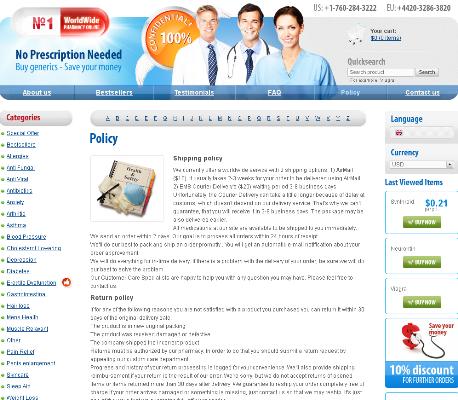Oseltamivir Vs Zanamivir: Choosing the Right Antiviral - Comparative Efficacy, Delivery Methods, and Side Effects
How Oseltamivir and Zanamivir Work Differently Inside Cells
Inside the cell, these antivirals pursue a similar goal: stop viral spread by targeting neuraminidase. Oseltamivir arrives as a prodrug, slipping through membranes and converting in the liver to an active inhibitor that travels to infected respiratory cells. Zanamivir, inhaled directly, lands where the virus lives and binds the enzyme more locally.
Because oseltamivir is systemic, it can reach extrapulmonary sites but needs metabolic activation; zanamivir’s direct approach delivers high concentrations at the mucosal enviroment with minimal systemic exposure.
Inside infected cells, oseltamivir’s metabolite competes at the catalytic pocket, reducing virion release. Zanamivir, shaped to mimic sialic acid, locks more tightly on neuraminidase, Occassionally yielding stronger inhibition but depend on delivery.
Delivery matters for effectiveness.
Comparative Efficacy Across Influenza Strains and Populations

Clinicians Occassionally weigh real-world data and trial results when choosing antivirals. Studies show oseltamivir shortens symptom duration in seasonal influenza, but benefits vary by viral subtype and by whether high-risk patients are treated.
Zanamivir demonstrates strong in vitro inhibition of many A and B strains, yet inhaled delivery can limit pulmonary distribution. Oral oseltamivir provides systemic exposure, which may produce more consistent clinical effectiveness in some cohorts.
Meta-analyses indicate modest reductions in complications and hospital stays among elderly and immunocompromised groups, while effect sizes are smaller in low-risk outpatients. Surveillance of strain prevalence helps predict population-level benefit. Local vaccine uptake also modifies outcomes.
Resistance trends and access influence choices. Clinicians balance age, comorbidities and inhalation ability, must avoid overuse that fosters resistance, and consider supply constraints. Timely public-health guidance lets prescribers Recieve season-specific advice and adjust strategies for vulnerable subgroups.
Delivery Methods: Oral Capsules Versus Inhaled Powder
An oral capsule like oseltamivir offers systemic absorption and easy home dosing; its narrative feels familiar, swallowing a pill to fight infection. Benefits include convenience, predictable pharmacokinetics and broad accessibility.
Inhaled powder targets respiratory mucosa, delivering high local drug concentrations with less systemic exposure. Technique matters — devices require coordination; Occassionally patients with COPD or wheeze cannot recieve inhaled therapy.
Clinicians weigh adherence, age, inhaler technique and comorbid lung disease when choosing formulation. Capsules suit children and outpatients; inhaled options may reduce systemic events but require instruction and monitoring carefully.
Timing, Dosing, and Practical Treatment Windows

A clinician remembers racing to prescribe oseltamivir to a parent whose child woke with fever and aching limbs. Early therapy often blunts symptoms and shortens illness, but timing is everything.
Ideally treatment begins within 48 hours of symptom onset; benefits diminish after that window. For hospitalized or high-risk patients, therapy can still help even if started later, guided by clinical judgement.
Typical dosing is weight-based for children and standard adult regimens for most adults, with adjustments for renal impairment. Adherence matters: missed doses reduce effectiveness and may prolong recovery.
In practice, clinicians balance rapid diagnostic testing with pragmatic decisions, sometimes treating empirically during peak season. Teh goal is to minimize complications and Occassionally avoid hospitalizations.
Side Effects, Contraindications, and Safety Considerations
Facing the flu, many remember relief from oseltamivir but also small mysteries of nausea. Clinicians describe most reactions as mild and transient; rash and psychiatric events are rare, and Occassionally vomiting prompts switching therapies. Patients often ask when relief becomes noticeable.
Certain patients need careful screening: severe renal impairment, young infants, or people with baseline respiratory disease may require dose adjustments or alternative choices. Drug interactions—especially with live vaccines or probenecid—shift risk profiles, so a medication review is essential. Genetic and age factors also modify response.
| Risk | Action |
|---|---|
| Renal | Adjust |
Practical safety means monitoring renal function, advising hydration, and watching behavior changes in children. In pregnancy, the balance favors treatment during high-risk illness, but shared decision-making and prompt follow-up ensure optimal outcomes. Pharmacists can help Acomodate dosing schedules and flag concerns for rapid recovery.
Resistance Risk, Public Health Impact, and Cost
A clinician remembers how quickly influenza strains can shift, and that antiviral pressure can select for less susceptible variants; patients who recieve antivirals late or incompletely treated can drive such selection. Population-level use shapes viral ecology, so stewardship and targeted use reduce the chance of dominant resistant lineages, balancing individual benefit with communal risk.
Cost influences access and adherence: generics lower price and widen availability, but procurement and distribution bottlenecks can leave vulnerable groups exposed. Public-health programs must weigh stockpiling, rapid deployment, and equitable distribution against budget constraints, while surveillance for resistance and clear clinical guidance keep interventions both effective and sustainable, and budget impact analyses. CDC guidance on antivirals FDA Tamiflu label
<

